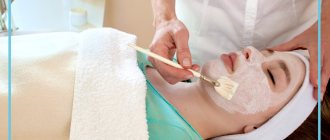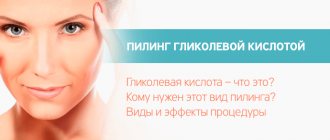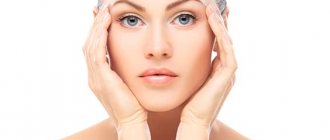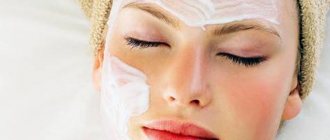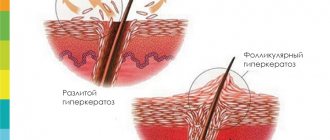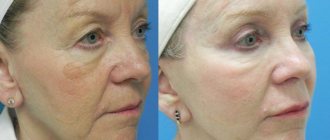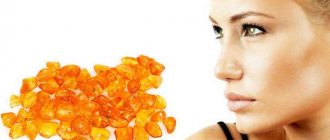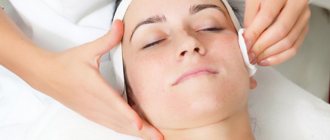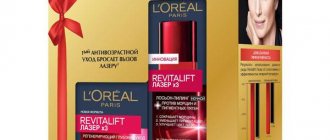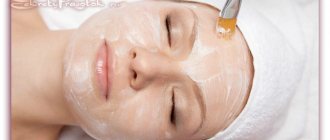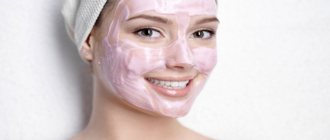How glycolic acid peeling treats skin imperfections
How glycolic acid peeling treats skin imperfections
Glycolic peeling can please any beauty with its results. It effectively solves problems such as wrinkles, pigmentation, enlarged pores. And thanks to its mild effects and wide range of indications, it has become one of the most common salon procedures. Expert Clinics services Thread face lifting The result lasts up to 5 years, and biocompatible mesothreads are safe for health. Thread face lifting Facial contouring This is a way to avoid surgery or postpone it for a long time. Facial contouring Facial mesotherapy Copes perfectly with dry and dehydrated skin, helps get rid of dark spots and wrinkles. Facial mesotherapy Call me back What is glycolic peeling The active component of this peeling is glycolic acid. Once on the surface of the skin, it damages epidermal cells, causing exfoliation and promoting cellular renewal. The percentage of glycolic acid content can be either low or high and varies from 5 to 70%. Such a high percentage is necessary for deeper chemical peeling. Unlike other fruit peels, glycolic peels have their own characteristics: Contained in green grapes and sugar cane; It has a small molecular weight, so it penetrates the stratum corneum more easily; Has a gentle effect on the skin; Affects the structure of the dermis, stimulating the production of hyaluronic acid and collagen. Therefore, glycolic peeling is also called remodeling. When is a glycolic acid peel needed? Indications for glycolic peeling are: - fine wrinkles; - thinning of the dermis; - loss of firmness and elasticity; - thickening of the stratum corneum (hyperkeratosis); - pigmentation; - dermatosis; - stretch marks on the face and body; - oily skin, in particular, excess sebum, shine, enlarged pores, comedones; - post-acne. Glycolic peeling is also suitable as a preparatory step for more aggressive procedures. Sign up for a consultation Stages of the peeling procedure The stages of glycolic peeling are as follows: 1. Cleansing the skin of decorative cosmetics, dust particles and excess sebum. 2. Applying degreasing lotion. 3. Application and distribution of peeling. To soften the skin, a composition with a lower concentration is applied first, followed by the main product. At this moment, a slight burning sensation is possible. This way you can feel that the acid has begun its work. 4. Maintaining the composition. The time is determined for each person individually and usually takes several minutes. 5. Neutralization of the composition. It is carried out using a specialized solution that neutralizes the acid. 6. Applying a soothing cream or mask. The duration of the entire procedure is on average from 35 to 45 minutes. How to properly care for your skin after a glycolic acid peel? The main advantage of this type of peeling is the absence of discomfort after the procedure, even with sensitive skin. Side effects may include a tingling sensation, slight redness, and peeling. The composition of the glycolic peeling acts softly and delicately, so it does not require a recovery period. To eliminate any complications, experts recommend adhering to a number of rules: - Protect your skin from ultraviolet rays using SPF products; — Refrain from using decorative cosmetics; — For 2-3 days, exclude strong physical activity, going to the sauna, bathhouse, solarium, swimming pool. To eliminate skin imperfections, 2-3 procedures may be needed. anti-aging treatments require approximately 6-7 sessions. Peeling with glycolic acid at home Many girls prefer to carry out glycolic peeling on their own at home. True, cosmetologists do not approve of this approach. At home, the use of the drug is allowed within 5-7%. But you need to keep in mind that the process requires special care and attention, since if the procedure is carried out incorrectly, the risks of unpleasant consequences increase. And incorrect actions may not only fail to improve the quality of the skin, but also cause an allergic reaction. In addition, the compounds purchased in the store may not be of the highest quality. Therefore, it is better to trust your beauty and health to professionals. Effect after peeling with glycolic acid Glycolic peeling is an affordable, low-traumatic procedure. It has a comprehensive effect on the skin, due to which: - the skin texture is smoothed; — pigmentation is eliminated or becomes less noticeable; - shallow wrinkles go away; — acne weakens; - post-acne lesions become less noticeable; - pores are cleaned and reduced; - water balance is restored; - elasticity and firmness returns to the skin. Sign up
2021-09-01
2021-10-05
Expert Clinics
Expert Clinics
How glycolic acid peeling treats skin imperfections
How glycolic acid peeling treats skin imperfections
How glycolic acid peeling treats skin imperfections
WHAT IS GLYCOLIC ACID?
One of the most well-known and widely used alpha hydroxy acids (AHAS) is glycolic acid. With many anti-aging properties, glycolic acid is considered by many skin care experts to be the AHAS gold standard. It's so gentle, yet so effective at fighting acne, hydrating your skin, and eliminating signs of aging. AHAS are obtained from natural substances such as fruits, milk and sugar. Glycolic acid is derived from sugar cane and is classified as a humectant, meaning its molecules tend to attract moisture rather than repel it. This helps the natural acid provide adequate hydration to the skin.
It acts as a chemical exfoliant rather than a mechanical one, so it can be used on a variety of skin types. After gently exfoliating dead skin cells and dirt, its molecules absorb moisture, enhancing the effectiveness of your hydrating toners, moisturizers and creams. However, products with glycolic acid help prevent further formation of wrinkles, signs of aging and thinning of the skin.
This super skin care ingredient has a variety of benefits that can significantly improve the overall health and appearance of almost any skin type. Here's what you need to know about this powerful alpha hydroxy acid.
HOW DOES GLYCOLIC ACID WORK?
Glycolic acid is the smallest molecule of all the AHAs. Its tiny size allows it to penetrate into pores, lifting dirt and sebum out. Many other cleansers are only able to remove the top layer, leaving behind acne, clogged pores and a dull appearance.
Because glycolic acid can penetrate deeply, it is a great option for those struggling with acne or hormonal skin conditions. Exercise enthusiasts also tend to choose glycolic acid-based products due to its penetrating power. Hair follicles and large pores tend to trap sweat and other microscopic particles, exacerbating breakouts and possible infections. Glycolic acid passes through several layers of the dermis and dissolves this dirt, replacing moisture. Your skin won't feel the need to overreact to sebum replacement, but will be able to stay clear of those pesky pimples.
BENEFITS OF GLYCOLIC ACID
We've touched on a few of the direct benefits of using glycolic acid products, but here are even more ways this amazing ingredient works to improve your skin.
Removes dead skin cells
Do you want glowing skin without having to wear makeup? This is difficult to achieve without an effective exfoliating cleanser. Glycolic acid dissolves dead skin cells, which often make skin look dull, and removes the top layer of impurities. Then, by attracting moisture it helps your skin look bright, fresh and radiant.
Anti-aging properties
Pigmentation and wrinkles give the skin an older, tired appearance. In addition, aging skin tends to lose moisture faster than younger skin. The hydrating and exfoliating properties of glycolic acid combat each of these.
Ability to allow other skin care products to penetrate deeper into the skin
Glycolic acid boosts the effectiveness of your anti-aging products like retinol and vitamin C. It removes the top layer of dirty, dead skin cells, allowing your creams and serums to penetrate deeper, plumping the skin and smoothing fine lines. Because it exfoliates so well, GA clears the way for other products to work their magic on prepped skin.
Lightening and smoothing
As a chemical exfoliant, glycolic acid dissolves dead skin cells and stimulates cellular turnover. This is noticeable in the smoother appearance of the forehead, cheeks and chin. Glycolic acid also helps minimize the appearance of acne scars, age spots and sun spots.
Fight acne
Because of its size, glycolic acid penetrates deeply, removing dirt and subcutaneous contaminants from the surface. Blackheads are also the result of clogged pores and are more difficult to remove without irritating the skin or risking inflammation on the skin. Glycolic acid has the ability to penetrate deeply, so it not only exfoliates and removes the top layer of dead skin cells, but it can also dissolve sebum that otherwise blocks pores and leads to pimples and blackheads, helping to minimize the appearance of pores with frequent use.
Combats dryness
Women going through menopause struggle with extreme dryness, flaking and acne, often at the same time. Glycolic acid can help improve skin texture while combating dryness when combined with other hydrating products such as hyaluronic acid and antioxidant-rich moisturizers.
Cleansers and toners containing glycolic acid can benefit virtually all skin types, regardless of condition or age. It's gentleness, effectiveness, and multitude of benefits mean that no matter your skin care routine, glycolic acid will likely provide you with some benefit.
ARE THERE RISK FACTORS ASSOCIATED WITH GLYCOLIC ACID SKIN CARE PRODUCTS?
Glycolic acid is generally well tolerated by all skin types because it is so gentle. Plus, it doesn't increase irritation like mechanical exfoliators can sometimes do. However, because it exfoliates so well, sensitive skin types such as those with psoriasis, eczema or rosacea are advised to test the ingredient in very small doses first.
When you want to add this ingredient to your skin care routine, don't just pick any product with “glycolic acid” on the ingredient list. For gentle exfoliation, start with a lower concentration (less than 10%) and use it consistently over a long period of time to see how your skin reacts.
Sunscreen is important when using glycolic acid cleansers, as the new layer of your skin will be especially sensitive to sunburn, damage and pigmentation.
Features of using cosmetics with glycolic acid for different skin types
- For oily problem and combination skin Oily and problem skin types respond well to any products with glycolic acid on a daily basis. Anti-inflammatory and sebum-regulating products containing the component at the base of the formula have a keratolytic and renewing effect without dehydrating the epidermis. Also look for glycerin, hyaluronic acid, niacinamide, salicylic acid, or lipo-hydroxy acid in products for maximum results. The complex of salicylic and lipo-hydroxy acids can be used without the addition of LHA acids, as, for example, in the formula of Effaclar mattifying lotion.
- For dry and sensitive skin To achieve a light exfoliation effect without skin irritation, use a glycolic acid skin cream with a concentration of up to 5%. For sensitive skin, choose tonics or lotions with low content (up to 3%) 3-4 times a week. Formulas with a combination of acid, niacinamide, squalane, thermal water, and hyaluronic acid are also suitable to prevent skin irritation. If irritation or allergies occur, switch to a product with a lower content of the substance or stop using it altogether.
- For normal and mature To care for mature skin with visible signs of aging, you can use a complex of acids in the formula, such as BHA and AHA acids. Professional peelings with a high content of alpha hydroxy acid will help to intensively renew the epidermis. Creams, gels, tonics, and cleansers with a low component content are suitable as a regular beauty routine.
How is glycolic acid used?
In cosmetics
Due to its powerful keratolytic properties, glycolic acid is used in cosmetics for enhanced exfoliation of dead skin cells, skin renewal, deep cleansing and rejuvenation. Most often, the substance is found in the basis of active formulas for oily and problem skin types, as well as for mature skin. When choosing an acid-containing product for care, pay attention to the concentration.
Beauty formulas based on glycolic acid also activate the synthesis of natural collagen, elastin and hyaluronic acid, increasing skin turgor. Since alpha hydroxyl acid is water-soluble, it is not recommended to combine products based on it with dense fatty and oily formulas - this will reduce its effectiveness.
In cosmetology
One of the most popular salon facial skin treatments is glycolic facial peeling. The procedure is a type of chemical peeling with fruit acids: it effectively evens out the color and texture of the skin, and accelerates the regeneration of epidermal cells.
The high concentration of acid in the peeling composition (from 30%) has a powerful renewing and rejuvenating effect. Such facial cleansing is a traumatic renewal procedure and requires subsequent restorative, moisturizing and softening care. Be sure to protect your skin from UV rays and use sunscreen even in the cold season, for example, Anthelios Sunscreen Invisible Fluid SPF 50+/PPD 46.
What is glycolic acid?
Glycolic acid is a type of water-soluble alpha-hydroxyl fruit acids, obtained both synthetically and from natural plant components - sugar cane, bamboo, grapes. Both types of production are used in cosmetology - there is no significant difference between them.
Among all AHA acids, glycolic has the lowest molecular weight and acidity, which increases its ability to penetrate the epidermal layers of the skin and react instantly. The activity of the action and the depth of penetration depend on the pH level - the lower it is (more acidic), the higher the effectiveness of the acid.
Action and benefits of glycolic acid for facial skin
The rich range of actions it has on the skin makes glycolic acid one of the most popular components. Responsible for exfoliation, as well as due to its ability to rejuvenate, smooth, and prevent hyperpigmentation, alpha hydroxy acid satisfies the basic needs of oily skin and is widely used in anti-age beauty routines. Let's take a closer look at the beneficial properties of glycolic acid for the face.
- Evens out the color and texture of the epidermis.
- Fights age-related changes, smoothes even deep wrinkles.
- Compacts the deep layer of the epidermis, thins the superficial (horny) layer.
- Accelerates cellular renewal mechanisms.
- Increases tone, firmness and elasticity of the skin.
- Returns radiance and fresh appearance to facial skin.
- Helps get rid of signs of acne, has an anti-inflammatory effect: minimizes the appearance of acne, promotes the resorption of comedones, cleanses and tightens pores, reduces the visibility of blackheads.
- Helps get rid of post-acne: smoothes out stagnant spots, atrophic scars.
- Suppresses melanin production, corrects signs of photoaging: lightens hyperpigmentation, eliminates dehydration wrinkles.
Based on the above beneficial properties, we will highlight the most common skin problems and imperfections that glycolic acid is designed to combat.
Indications for the use of cosmetics with glycolic acid
- Early signs of aging.
- Visible age-related changes.
- Manifestation of photoaging.
- Hyperkeratosis.
- Acne (pimples, blackheads, comedones).
- Hyperpigmentation, malasma.
- Uneven relief and skin color, peeling.
- Post-acne marks.
